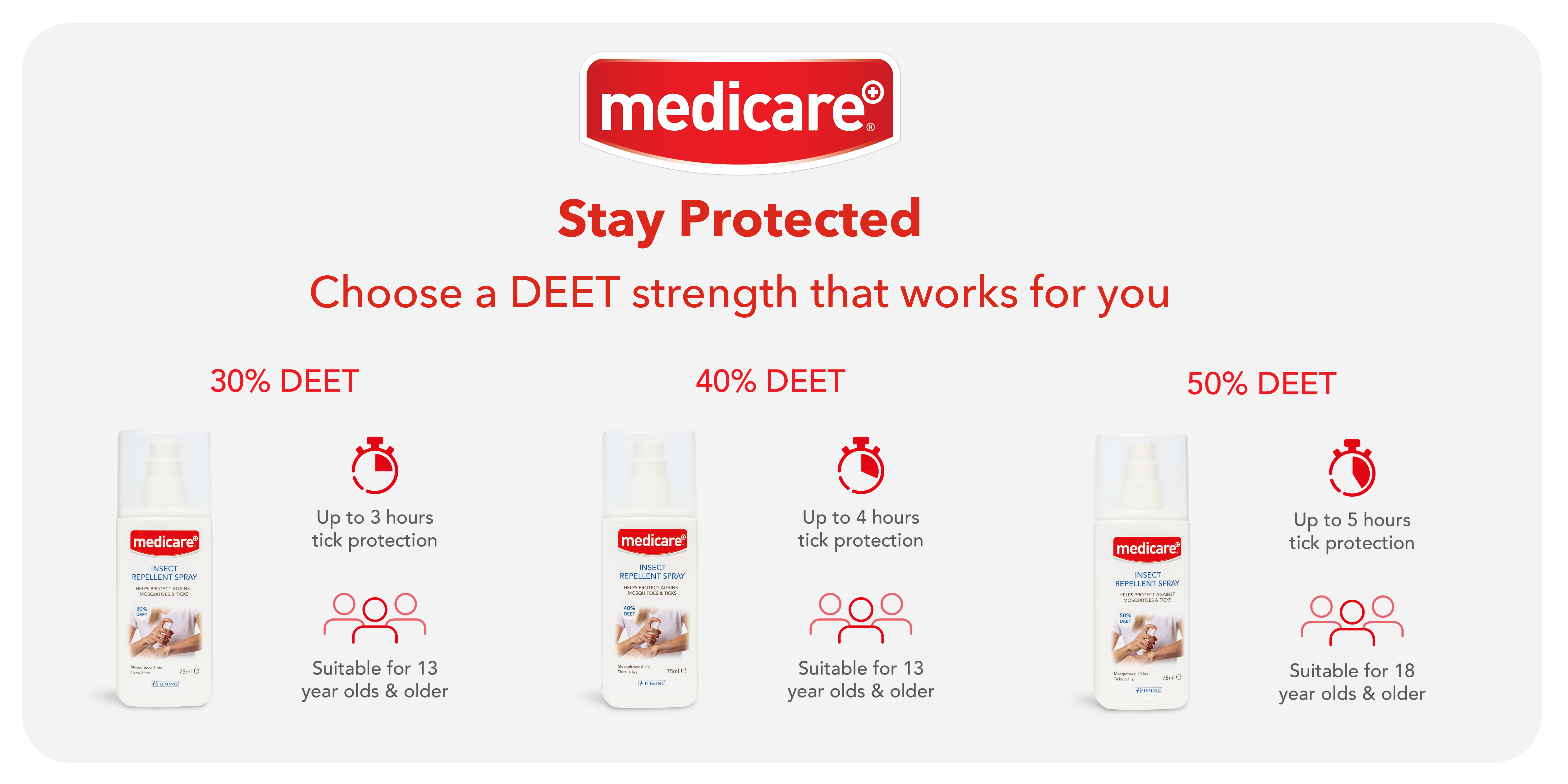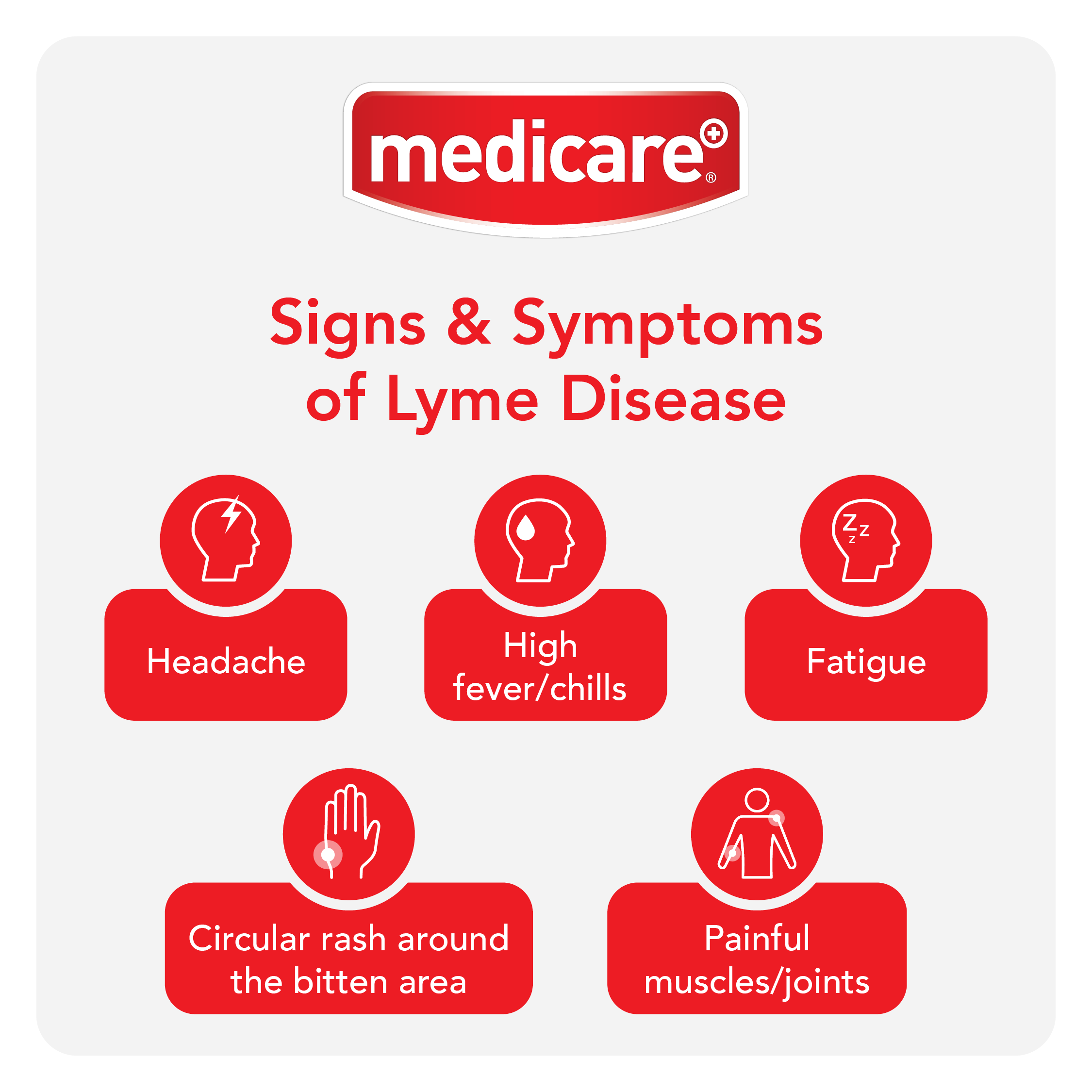Headlines
- Advanced Footcare Solutions: Use Cases Explained
- Keeping Customers Covered: How Pharmacies can address the Summer Burn Surge - A clinical and practical guide for pharmacy teams
- Fleming Medical Achieves ISO 13485 Certification – Reinforcing Our Commitment to Patient Safety and Quality
- Gentle Daily Ear Care with Medicare Ear Spray
- Breathe Easy with Medicare Nasal Spray
Be Rescue Ready: Tick Bite Prevention & Treatment
06 May 2022

Lyme Disease is a bacterial infection that is spread from infected tick bites. With May being Lyme Disease Awareness Month, it's important to highlight how to avoid ticks, the symptoms to look out for, and how to safely remove and treat a tick bite.
What are Ticks?
Ticks are small 6-legged blood sucking creatures and are present all year round, especially during the warmer months from April to September. For an infected tick to transmit Lyme Disease, it must be attached to the skin for at least 36 hours. Other infections can be spread by ticks in a matter of minutes. Therefore, it's important to know the prevention methods to avoid getting bitten and to recognise the early signs of a tick bite for quick removal and recovery.How to Combat Ticks:
- Use a DEET Spray (known chemically as N, N-diethyl-meta-toluamide) when going outdoors, especially in grassy/woodland areas. The Medicare DEET Range protects against a range of insect bites and stings from mosquitos, ticks, wasps, and bees. They offer 3 different strength levels so you can decide what level is right for you. The higher the DEET level, the longer lasting the protection. It is important to note that DEET spray is not recommended for use on children under the age of 12 or for people who suffer from sensitive skin.

- Know your surroundings: Ticks live in grassy, wooded areas and on warm-blooded animals such as cats and dogs. Outdoor activities such as camping or hiking can put you at higher risk of getting bitten as ticks are more likely to be present.
- Check your clothing after being outdoors: A good way to ensure that there are no ticks on your clothing is to tumble dry your clothes on a high temperature for 10 minutes. Alternatively, wash your clothes in a hot wash as cold/medium heat water will not kill ticks.
- Shower as soon as possible after being outdoors: Showering may help to get rid of any ticks that may not have attached to the skin. After showering it is a good idea to examine your body for any tick bites.
- In and around the ears
- Between the legs
- Inside the belly button
- Around the waist area
- In and around the scalp
- Back of the knees
- Under the arms
- Between toes
How to remove and treat a tick bite:
- Wearing gloves and using some tweezers, grasp the tick and pull straight out gently and steadily.
- Put the tick in a small container and take a picture of it to show to your GP. (This is a precautionary measure to give you peace of mind ). A medical professional will be able to judge whether the tick is infected.
- Ensure to clean the area with an antiseptic after removal. The Medicare Alcohol Free Cleansing Wipes are perfect for rapid skin cleansing with no sting. They are suitable for all ages and use a gentle cleansing formula that's kind to skin.
When to contact your GP:
Although most tick bites are harmless, it's always good to closely monitor the skin after you've been bitten and any symptoms that may follow. A common early symptom of Lyme Disease is a red circular rash that develops around a tick bite. Most rashes will appear within 4 weeks and can last for several weeks. Not every case of Lyme Disease will present in a rash on the skin.

Having flu-like symptoms is another sign of Lyme Disease and these can include a high fever, headaches, muscle/joint pain, and fatigue. If you are worried there is a chance you have Lyme Disease, consult with a GP. Lyme Disease is relatively easy to treat and a course of antibiotics should have feeling back to yourself in no time. If untreated, it can become worse and can affect your everyday life.
Follow us on social media for more tips and advice in first aid and much more:
References: Helpful websites:
- https://www.healthline.com/health/tick-bites#pictures-of-ticks
- https://www.cdc.gov/ticks/avoid/on_people.html
- https://www.hopkinslyme.org/lyme-education/5-tips-for-preventing-tick-bites-and-lyme-disease/

 Fleming Medical UK
Fleming Medical UK
